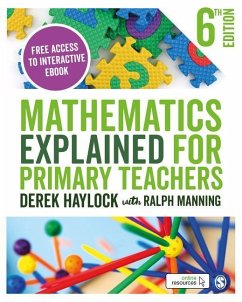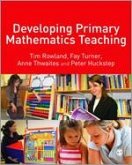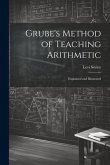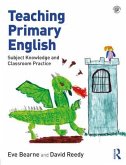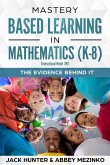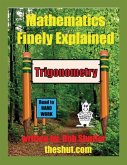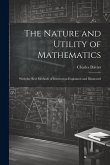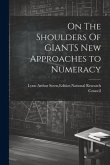Schade – dieser Artikel ist leider ausverkauft. Sobald wir wissen, ob und wann der Artikel wieder verfügbar ist, informieren wir Sie an dieser Stelle.
- Broschiertes Buch
- Merkliste
- Auf die Merkliste
- Bewerten Bewerten
- Teilen
- Produkt teilen
- Produkterinnerung
- Produkterinnerung
To help teachers confidently teach mathematics in primary school, this book develops their understanding of mathematical concepts and processes and how children learn them.
Andere Kunden interessierten sich auch für
![Developing Primary Mathematics Teaching Developing Primary Mathematics Teaching]() Tim RowlandDeveloping Primary Mathematics Teaching200,99 €
Tim RowlandDeveloping Primary Mathematics Teaching200,99 €![Grube's Method of Teaching Arithmetic: Explained and Illustrated Grube's Method of Teaching Arithmetic: Explained and Illustrated]() Levi SeeleyGrube's Method of Teaching Arithmetic: Explained and Illustrated21,99 €
Levi SeeleyGrube's Method of Teaching Arithmetic: Explained and Illustrated21,99 €![Teaching Primary English Teaching Primary English]() Eve BearneTeaching Primary English54,99 €
Eve BearneTeaching Primary English54,99 €![Mastery Based Learning in Mathematics (K-8) Mastery Based Learning in Mathematics (K-8)]() Jack E HunterMastery Based Learning in Mathematics (K-8)27,99 €
Jack E HunterMastery Based Learning in Mathematics (K-8)27,99 €![Mathematics Finely Explained - Trigonometry Mathematics Finely Explained - Trigonometry]() Robert W ShutlerMathematics Finely Explained - Trigonometry45,99 €
Robert W ShutlerMathematics Finely Explained - Trigonometry45,99 €![The Nature and Utility of Mathematics; With the Best Methods of Instruction Explained and Illustrated The Nature and Utility of Mathematics; With the Best Methods of Instruction Explained and Illustrated]() Charles DaviesThe Nature and Utility of Mathematics; With the Best Methods of Instruction Explained and Illustrated29,99 €
Charles DaviesThe Nature and Utility of Mathematics; With the Best Methods of Instruction Explained and Illustrated29,99 €![On The Shoulders Of GIANTS New Approaches to Numeracy On The Shoulders Of GIANTS New Approaches to Numeracy]() On The Shoulders Of GIANTS New Approaches to Numeracy23,99 €
On The Shoulders Of GIANTS New Approaches to Numeracy23,99 €-
-
To help teachers confidently teach mathematics in primary school, this book develops their understanding of mathematical concepts and processes and how children learn them.
Produktdetails
- Produktdetails
- Verlag: Sage Publications
- 6th edition
- Seitenzahl: 504
- Erscheinungstermin: 23. Juli 2019
- Englisch
- Abmessung: 231mm x 185mm x 25mm
- Gewicht: 998g
- ISBN-13: 9781526423207
- ISBN-10: 1526423200
- Artikelnr.: 54675772
- Herstellerkennzeichnung
- Libri GmbH
- Europaallee 1
- 36244 Bad Hersfeld
- gpsr@libri.de
- Verlag: Sage Publications
- 6th edition
- Seitenzahl: 504
- Erscheinungstermin: 23. Juli 2019
- Englisch
- Abmessung: 231mm x 185mm x 25mm
- Gewicht: 998g
- ISBN-13: 9781526423207
- ISBN-10: 1526423200
- Artikelnr.: 54675772
- Herstellerkennzeichnung
- Libri GmbH
- Europaallee 1
- 36244 Bad Hersfeld
- gpsr@libri.de
Derek Haylock is an education writer, with an extensive list of publications in the field of mathematics education. He worked for over 30 years in teacher education, both initial and in-service, and was Co-Director of Primary Initial Teacher Training and responsible for the mathematics components of the primary programmes at the University of East Anglia (UEA) in Norwich. He has considerable practical experience of teaching and researching in primary classrooms. His work in mathematics education has taken him to Germany, Belgium, Lesotho, Kenya, Brunei, India and Sweden. As well as his publications in the field of education, he has written seven books of Christian drama for young people and a Christmas musical (published by Church House/National Society). For 15 years after his time at UEA, he was in great demand as a consultant and professional speaker. His work as a writer continues.
SECTION A: MATHEMATICAL UNDERSTANDING
Chapter 1: Primary Teachers' Insecurity about Mathematics
Chapter 2: Mathematics in the Primary Curriculum
Chapter 3: Learning How to Learn Mathematics
SECTION B: MATHEMATICAL REASONING AND PROBLEM SOLVING
Chapter 4: Key Processes in Mathematical Reasoning
Chapter 5: Modelling and Problem Solving
SECTION C: NUMBERS AND CALCULATIONS
Chapter 6: Numbers and Place Value
Chapter 7: Addition and Subtraction Structures
Chapter 8: Mental Strategies for Addition and Subtraction
Chapter 9: Written Methods for Addition and Subtraction
Chapter 10: Multiplication and Division Structures
Chapter 11: Mental Strategies for Multiplication and Division
Chapter 12: Written Methods for Multiplication and Division
SECTION D: FURTHER NUMBER CONCEPTS AND SKILLS
Chapter 13: Natural Numbers: Some Key Concepts
Chapter 14: Integers: Positive and Negative
Chapter 15: Fractions and Ratios
Chapter 16: Decimal Numbers and Rounding
Chapter 17: Calculations with Decimals
Chapter 18: Proportionality and Percentages
SECTION E: ALGEBRA
Chapter 19: Algebraic Reasoning
Chapter 20: Coordinates and Linear Relationships
SECTION F: MEASUREMENT
Chapter 21: Concepts and Principles of Measurement
Chapter 22: Perimeter, Area and Volume
SECTION G: GEOMETRY
Chapter 23: Angle
Chapter 24: Transformations and Symmetry
Chapter 25: Classifying Shapes
SECTION H: STATISTICS AND PROBABILITY
Chapter 26: Handling Data
Chapter 27: Comparing Sets of Data
Chapter 28: Probability
Chapter 1: Primary Teachers' Insecurity about Mathematics
Chapter 2: Mathematics in the Primary Curriculum
Chapter 3: Learning How to Learn Mathematics
SECTION B: MATHEMATICAL REASONING AND PROBLEM SOLVING
Chapter 4: Key Processes in Mathematical Reasoning
Chapter 5: Modelling and Problem Solving
SECTION C: NUMBERS AND CALCULATIONS
Chapter 6: Numbers and Place Value
Chapter 7: Addition and Subtraction Structures
Chapter 8: Mental Strategies for Addition and Subtraction
Chapter 9: Written Methods for Addition and Subtraction
Chapter 10: Multiplication and Division Structures
Chapter 11: Mental Strategies for Multiplication and Division
Chapter 12: Written Methods for Multiplication and Division
SECTION D: FURTHER NUMBER CONCEPTS AND SKILLS
Chapter 13: Natural Numbers: Some Key Concepts
Chapter 14: Integers: Positive and Negative
Chapter 15: Fractions and Ratios
Chapter 16: Decimal Numbers and Rounding
Chapter 17: Calculations with Decimals
Chapter 18: Proportionality and Percentages
SECTION E: ALGEBRA
Chapter 19: Algebraic Reasoning
Chapter 20: Coordinates and Linear Relationships
SECTION F: MEASUREMENT
Chapter 21: Concepts and Principles of Measurement
Chapter 22: Perimeter, Area and Volume
SECTION G: GEOMETRY
Chapter 23: Angle
Chapter 24: Transformations and Symmetry
Chapter 25: Classifying Shapes
SECTION H: STATISTICS AND PROBABILITY
Chapter 26: Handling Data
Chapter 27: Comparing Sets of Data
Chapter 28: Probability
SECTION A: MATHEMATICAL UNDERSTANDING
Chapter 1: Primary Teachers' Insecurity about Mathematics
Chapter 2: Mathematics in the Primary Curriculum
Chapter 3: Learning How to Learn Mathematics
SECTION B: MATHEMATICAL REASONING AND PROBLEM SOLVING
Chapter 4: Key Processes in Mathematical Reasoning
Chapter 5: Modelling and Problem Solving
SECTION C: NUMBERS AND CALCULATIONS
Chapter 6: Numbers and Place Value
Chapter 7: Addition and Subtraction Structures
Chapter 8: Mental Strategies for Addition and Subtraction
Chapter 9: Written Methods for Addition and Subtraction
Chapter 10: Multiplication and Division Structures
Chapter 11: Mental Strategies for Multiplication and Division
Chapter 12: Written Methods for Multiplication and Division
SECTION D: FURTHER NUMBER CONCEPTS AND SKILLS
Chapter 13: Natural Numbers: Some Key Concepts
Chapter 14: Integers: Positive and Negative
Chapter 15: Fractions and Ratios
Chapter 16: Decimal Numbers and Rounding
Chapter 17: Calculations with Decimals
Chapter 18: Proportionality and Percentages
SECTION E: ALGEBRA
Chapter 19: Algebraic Reasoning
Chapter 20: Coordinates and Linear Relationships
SECTION F: MEASUREMENT
Chapter 21: Concepts and Principles of Measurement
Chapter 22: Perimeter, Area and Volume
SECTION G: GEOMETRY
Chapter 23: Angle
Chapter 24: Transformations and Symmetry
Chapter 25: Classifying Shapes
SECTION H: STATISTICS AND PROBABILITY
Chapter 26: Handling Data
Chapter 27: Comparing Sets of Data
Chapter 28: Probability
Chapter 1: Primary Teachers' Insecurity about Mathematics
Chapter 2: Mathematics in the Primary Curriculum
Chapter 3: Learning How to Learn Mathematics
SECTION B: MATHEMATICAL REASONING AND PROBLEM SOLVING
Chapter 4: Key Processes in Mathematical Reasoning
Chapter 5: Modelling and Problem Solving
SECTION C: NUMBERS AND CALCULATIONS
Chapter 6: Numbers and Place Value
Chapter 7: Addition and Subtraction Structures
Chapter 8: Mental Strategies for Addition and Subtraction
Chapter 9: Written Methods for Addition and Subtraction
Chapter 10: Multiplication and Division Structures
Chapter 11: Mental Strategies for Multiplication and Division
Chapter 12: Written Methods for Multiplication and Division
SECTION D: FURTHER NUMBER CONCEPTS AND SKILLS
Chapter 13: Natural Numbers: Some Key Concepts
Chapter 14: Integers: Positive and Negative
Chapter 15: Fractions and Ratios
Chapter 16: Decimal Numbers and Rounding
Chapter 17: Calculations with Decimals
Chapter 18: Proportionality and Percentages
SECTION E: ALGEBRA
Chapter 19: Algebraic Reasoning
Chapter 20: Coordinates and Linear Relationships
SECTION F: MEASUREMENT
Chapter 21: Concepts and Principles of Measurement
Chapter 22: Perimeter, Area and Volume
SECTION G: GEOMETRY
Chapter 23: Angle
Chapter 24: Transformations and Symmetry
Chapter 25: Classifying Shapes
SECTION H: STATISTICS AND PROBABILITY
Chapter 26: Handling Data
Chapter 27: Comparing Sets of Data
Chapter 28: Probability

